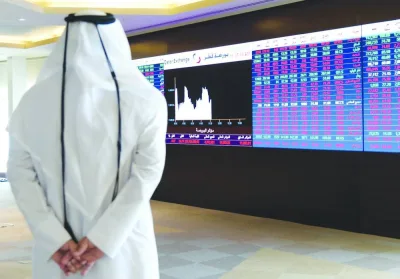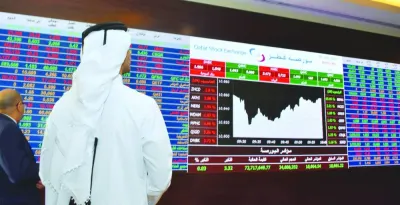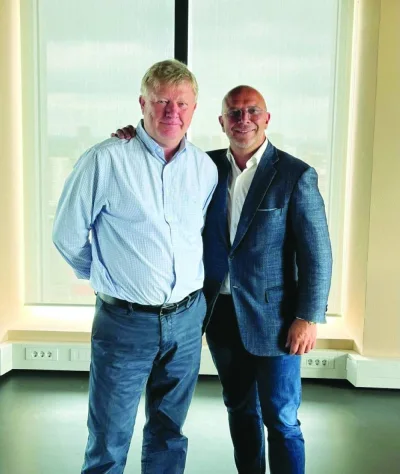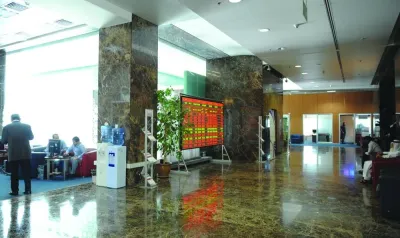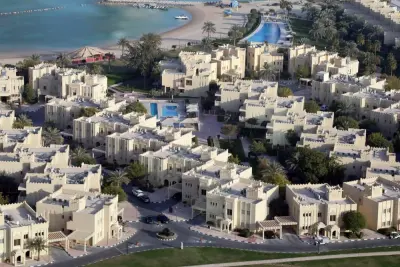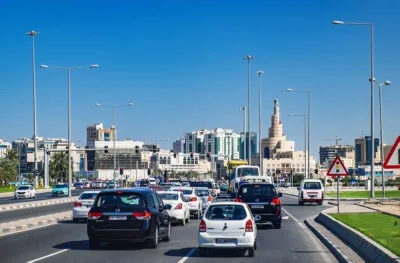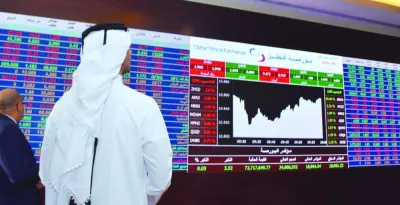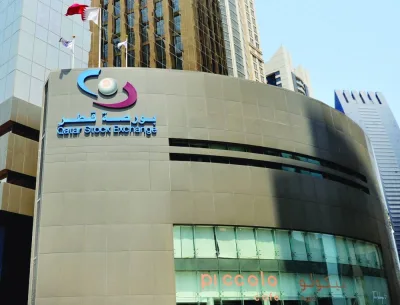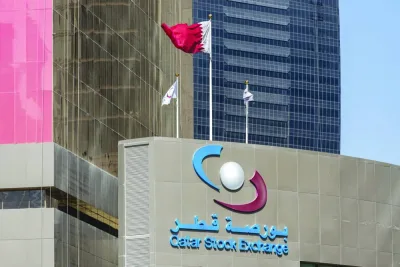The Qatar Stock Exchange on Thursday lost more than 92 points and its key index fell below 10,600 levels, on the back of selling pressure, especially in the banks and financial services counter.The foreign institutions were seen net profit takers as the 20-stock Qatar Index shed 0.86% to 10,571.63 points. The market has been on a slippery path for the fourth consecutive session.The Arab retail investors were increasingly net sellers in the main market, which reported higher year-to-date losses of 1.02%.The foreign individuals turned net bearish in the main bourse, which saw the index touch an intraday high of 10,703 points.About 73% of the traded constituents were in the red in the main market, whose capitalisation melted QR5.21bn or 0.83% to QR621.34bn with large and midcap segments losing the most.The Gulf individuals’ weakened net buying interests had its influence in the main bourse, which saw a total of 7,069 exchange traded funds (sponsored by Masraf Al Rayan and Doha Bank) valued at QR0.07mn changed hands across six deals.The local retail investors’ net buying also slackened in the main market, which saw no trading of sovereign bonds.The Islamic index was seen declining slower than the other indices in the main market, which saw no trading of treasury bills.The Total Return Index shed 0.86%, Al Rayan Islamic Index (Price) by 0.63% and All Share Index by 0.84% in the main bourse, whose trade turnover and volumes were on the rise.The banks and financial services sector index declined 1.15%, telecom (0.69%), industrials (0.68%), transport (0.49%), consumer goods and services (0.42%) and realty (0.28%); while insurance gained 0.34%.Major losers in the main market included Beema, Commercial Bank, Alkhaleej Takaful, Alijarah Holding, QNB, Masraf Al Rayan, Qatari German Medical Devices, Industries Qatar, Aamal Company, Qatari Investors Group, Estithmar Holding, Qamco, Ooredoo, Mazaya Qatar and Gulf Warehousing.Nevertheless, Dlala, Mekdam Holding, Gulf International Services, Qatar Insurance and Vodafone Qatar were among the gainers in the main bourse. In the venture market, both Al Faleh Educational Holding and Mahhar Holding saw their shares appreciate in value.The foreign funds turned net sellers to the tune of QR27.01mn compared with net buyers of QR17.12mn on August 16.The Arab individual investors’ net selling increased perceptibly to QR4.34mn against QR2.94mn the previous day.The foreign individuals were net sellers to the extent of QR0.08mn compared with net buyers of QR0.51mn on Wednesday.The local retail investors’ net buying weakened noticeably to QR7.65mn against QR8.76mn on August 16.The Gulf individual investors’ net buying eased marginally to QR0.89mn compared to QR1.14mn the previous day.However, the Gulf institutions’ net buying strengthened significantly to QR20.27mn against QR0.92mn on Wednesday.The domestic funds turned net buyers to the tune of QR2.62mn compared with net sellers of QR25.4mn on August 16.The Arab institutions had no major net exposure against net profit takers to the extent of QR0.13mn the previous day.Trade volumes in the main market were up 1% to 134.82mn shares, value by 5% to QR433.08mn and deals by 7% to 17,155.The venture market saw trade volumes more than double to 3.66mn equities and value more than double to QR8.32mn on more than doubled transactions to 641.

Santhosh V. Perumal
Santhosh V. Perumal, a postgraduate in Econometrics with an advance qualification in Capital Markets and Financial Services, is Gulf Times' journalist. His coverage areas are debt and equity, hydrocarbons, international trade, environment, banks, insurance and real estate. Previously, he was in New Delhi, India as Senior Finance Correspondent of PTI.
Most Read Stories

